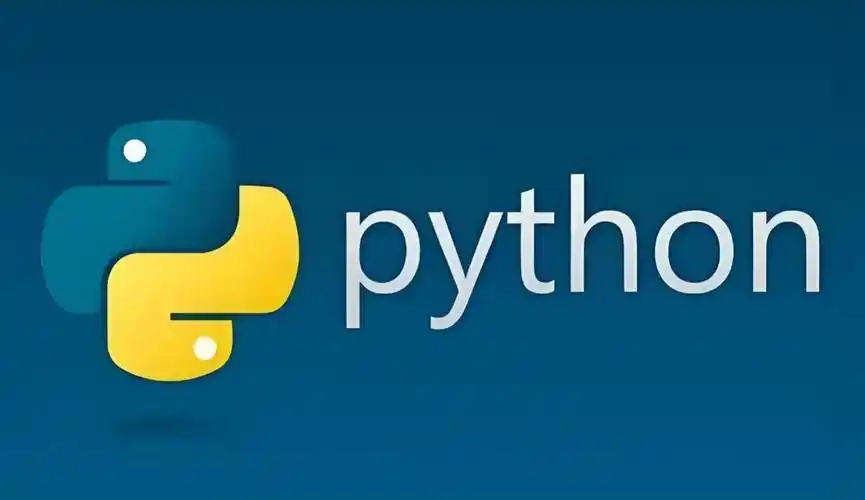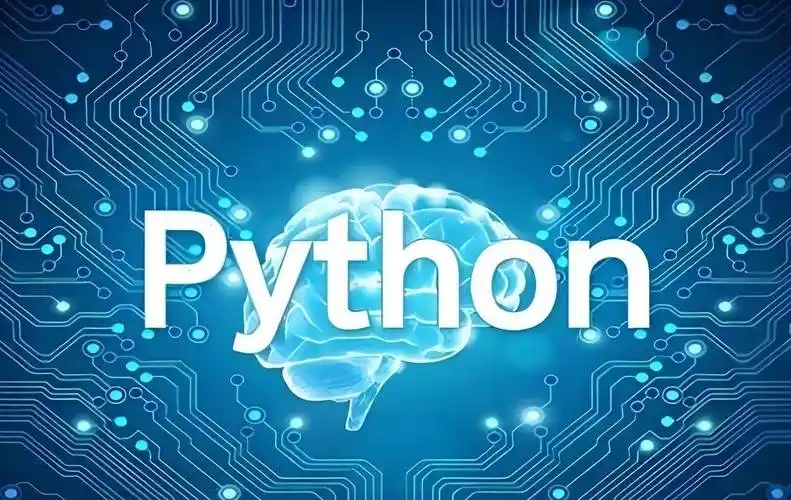Python:AI开发第一语言的全面剖析

文章目录
- 引言
- 1. Python的历史与AI开发的契合
- 1.1 Python的诞生与设计哲学
- 1.2 Python与AI发展的历史交汇
- 2. 语言特性如何支持AI开发
- 2.1 动态类型与交互式编程
- 2.2 简洁优雅的语法
- 2.3 高级数据结构的原生支持
- 2.4 函数式编程特性
- 2.5 强大的元编程能力
- 3. 丰富的AI生态系统和库支持
- 3.1 深度学习框架
- TensorFlow
- PyTorch
- JAX
- 3.2 传统机器学习库
- Scikit-learn
- XGBoost、LightGBM和CatBoost
- 3.3 数据处理和可视化库
- Pandas
- NumPy和SciPy
- Matplotlib和Seaborn
- 3.4 自然语言处理库
- NLTK和Spacy
- Transformers库(Hugging Face)
- 4. 社区与教育资源优势
- 4.1 庞大的开发者社区
- 4.2 丰富的学习资源
- 在线课程和教程
- 书籍和文档
- 代码示例和博客
- 4.3 学术界的广泛采用
- 5. 性能问题与解决方案
- 5.1 Python的性能瓶颈
- 5.2 性能优化策略
- 使用高效库
- 使用JIT编译
- 使用Cython
- 分布式计算
- 使用多进程绕过GIL
- 6. 与其他语言的对比分析
- 6.1 Python vs. R
- 6.2 Python vs. Julia
- 6.3 Python vs. Java/C++
- 7. 企业应用与工业界认可
- 7.1 大型科技公司的采用
- 7.2 初创公司和中小企业
- 7.3 传统行业的数字化转型
- 8. 未来挑战与发展趋势
- 8.1 当前面临的挑战
- 8.2 发展趋势与解决方案
- 性能改进
- 类型提示和静态检查
- 移动端和边缘计算
- AI开发工具的进一步集成
- 9. 结论:Python是否名至实归?
- 9.1 Python的优势是全面的
- 9.2 挑战与局限性真实存在但可管理
- 9.3 未来展望
- 9.4 最终判断

引言
在人工智能蓬勃发展的时代,Python已无可争议地成为AI开发领域的主导语言。根据2023年的多项开发者调查,Python在机器学习和数据科学领域的采用率超过85%,远高于其他编程语言。但这种主导地位是否实至名归?本文将从技术特性、生态系统、社区支持、性能表现以及未来趋势等多个维度,全面分析Python在AI开发中的地位,探讨其优势与局限性。

1. Python的历史与AI开发的契合
1.1 Python的诞生与设计哲学
Python由Guido van Rossum于1991年创建,其设计哲学强调代码的可读性和简洁性。“Readability counts”(可读性很重要)和"Simple is better than complex"(简单优于复杂)这些Python之禅(Zen of Python)中的原则,使得Python成为一门易于学习和使用的语言。
Python的简洁语法允许开发者用更少的代码表达复杂的概念,这对于需要快速迭代和实验的AI研究尤其重要。例如,一个简单的神经网络实现:
import tensorflow as tf
from tensorflow.keras import layers# 创建一个简单的神经网络
model = tf.keras.Sequential([layers.Dense(64, activation='relu', input_shape=(784,)),layers.Dense(64, activation='relu'),layers.Dense(10, activation='softmax')
])# 编译模型
model.compile(optimizer='adam',loss='categorical_crossentropy',metrics=['accuracy'])
相比其他语言,Python用极少的代码就定义了一个深度学习模型,这使得研究人员可以专注于算法本身而非语言细节。
1.2 Python与AI发展的历史交汇
Python并非从一开始就是AI开发的首选语言。在20世纪90年代和21世纪初,AI研究更多使用C++、Java甚至Lisp等语言。然而,随着NumPy和SciPy等科学计算库的出现(2005-2006年),Python开始在科学计算社区获得关注。
2010年左右,随着大数据和机器学习的兴起,Python迎来了转折点。Scikit-learn库的成熟为传统机器学习提供了统一接口,而2015年TensorFlow和后来PyTorch的出现,则确立了Python在深度学习领域的统治地位。
2. 语言特性如何支持AI开发
2.1 动态类型与交互式编程
Python的动态类型系统减少了代码量,提高了开发速度。在AI开发中,这意味着更快的原型设计和实验周期。Jupyter Notebook等交互式环境与Python完美结合,使数据探索和模型调试变得更加直观。
# 动态类型示例 - 无需声明变量类型
import numpy as np# 创建数组无需指定类型
data = np.array([1, 2, 3, 4, 5])
mean = np.mean(data) # 自动推断操作# 在Jupyter中可以直接交互式探索
print(f"数据: {data}")
print(f"均值: {mean}")
print(f"类型: {type(data)}")
2.2 简洁优雅的语法
Python的语法接近自然语言和数学表达式,降低了实现复杂算法的认知负担。比较一下Python和C++实现矩阵乘法的代码:
Python:
import numpy as npA = np.array([[1, 2], [3, 4]])
B = np.array([[5, 6], [7, 8]])result = np.dot(A, B)
# 或者更简洁的 @ 操作符
result = A @ B
C++:
#include <iostream>
#include <vector>using namespace std;vector<vector<int>> matrixMultiply(const vector<vector<int>>& A, const vector<vector<int>>& B) {int n = A.size();int m = A[0].size();int p = B[0].size();vector<vector<int>> result(n, vector<int>(p, 0));for (int i = 0; i < n; i++) {for (int j = 0; j < p; j++) {for (int k = 0; k < m; k++) {result[i][j] += A[i][k] * B[k][j];}}}return result;
}// 还需要主函数和输出代码...
Python版本的简洁性显而易见,这使得研究人员可以专注于算法逻辑而非实现细节。
2.3 高级数据结构的原生支持
Python内置了列表、字典、集合等高级数据结构,非常适合处理AI中常见的数据处理任务。
# 复杂数据处理的简洁实现
from collections import defaultdict# 计算词频 - 自然语言处理中的常见任务
text = "python is great for ai and python is easy to learn"
word_counts = defaultdict(int)for word in text.split():word_counts[word] += 1# 按频率排序
sorted_words = sorted(word_counts.items(), key=lambda x: x[1], reverse=True)print("词频统计:", dict(sorted_words))
2.4 函数式编程特性
Python支持函数式编程范式,包括lambda函数、map、filter、reduce等,这对于数据转换和预处理非常有用。
# 使用函数式编程处理数据
data = [1, 2, 3, 4, 5, 6, 7, 8, 9, 10]# 使用map和filter进行数据处理
processed = list(map(lambda x: x * 2, filter(lambda x: x % 2 == 0, data)))print("处理后的数据:", processed) # 输出: [4, 8, 12, 16, 20]# 使用列表推导式更简洁
processed = [x * 2 for x in data if x % 2 == 0]
2.5 强大的元编程能力
Python的元编程能力(如装饰器、元类)使得框架开发者可以创建高度抽象和易用的API,这是深度学习框架如TensorFlow和PyTorch能够提供简洁接口的原因之一。
# 装饰器在AI中的应用示例 - 计时和日志记录
import time
from functools import wrapsdef log_time(func):@wraps(func)def wrapper(*args, **kwargs):start_time = time.time()result = func(*args, **kwargs)end_time = time.time()print(f"{func.__name__} 执行时间: {end_time - start_time:.4f}秒")return resultreturn wrapper# 使用装饰器记录训练时间
@log_time
def train_model(model, data, labels, epochs=10):# 模拟训练过程for epoch in range(epochs):time.sleep(0.1) # 模拟训练耗时print(f"Epoch {epoch+1}/{epochs} 完成")return model# 调用被装饰的函数
model = train_model("示例模型", "数据", "标签")
3. 丰富的AI生态系统和库支持
3.1 深度学习框架
Python拥有最全面和强大的深度学习框架生态系统:
TensorFlow
由Google开发,是工业界最广泛使用的框架之一。其高级API Keras更是以易用性著称。
import tensorflow as tf
from tensorflow.keras.models import Sequential
from tensorflow.keras.layers import Dense# 快速构建神经网络
model = Sequential([Dense(128, activation='relu', input_shape=(784,)),Dense(64, activation='relu'),Dense(10, activation='softmax')
])model.compile(optimizer='adam',loss='sparse_categorical_crossentropy',metrics=['accuracy'])# 显示模型结构
model.summary()
PyTorch
由Facebook开发,在研究社区更受欢迎,以其动态计算图和Pythonic设计著称。
import torch
import torch.nn as nn
import torch.optim as optim# 定义神经网络
class NeuralNet(nn.Module):def __init__(self):super(NeuralNet, self).__init__()self.fc1 = nn.Linear(784, 128)self.fc2 = nn.Linear(128, 64)self.fc3 = nn.Linear(64, 10)self.relu = nn.ReLU()def forward(self, x):x = self.relu(self.fc1(x))x = self.relu(self.fc2(x))x = self.fc3(x)return xmodel = NeuralNet()
criterion = nn.CrossEntropyLoss()
optimizer = optim.Adam(model.parameters(), lr=0.001)
JAX
新兴的框架,结合了NumPy的熟悉接口和自动微分、GPU加速等先进特性。
import jax.numpy as jnp
from jax import grad, jit# 使用JAX定义和优化函数
def loss_fn(params, inputs, targets):predictions = jnp.dot(inputs, params)return jnp.mean((predictions - targets)**2)# 自动微分
grad_fn = grad(loss_fn)# 即时编译加速
fast_grad_fn = jit(grad_fn)
3.2 传统机器学习库
Scikit-learn
提供了统一的API接口,涵盖了从数据预处理到模型评估的整个机器学习流程。
from sklearn.ensemble import RandomForestClassifier
from sklearn.datasets import make_classification
from sklearn.model_selection import train_test_split
from sklearn.metrics import accuracy_score# 生成示例数据
X, y = make_classification(n_samples=1000, n_features=20, n_informative=15)# 划分训练测试集
X_train, X_test, y_train, y_test = train_test_split(X, y, test_size=0.2)# 创建和训练模型
clf = RandomForestClassifier(n_estimators=100)
clf.fit(X_train, y_train)# 预测和评估
y_pred = clf.predict(X_test)
print(f"准确率: {accuracy_score(y_test, y_pred):.2f}")
XGBoost、LightGBM和CatBoost
这些梯度提升库在数据科学竞赛中极为流行,Python提供了它们的一流支持。
import xgboost as xgb
from sklearn.datasets import load_boston
from sklearn.metrics import mean_squared_error# 加载数据
boston = load_boston()
X, y = boston.data, boston.target# 创建DMatrix - XGBoost的高效数据结构
dtrain = xgb.DMatrix(X, label=y)# 设置参数
params = {'max_depth': 6,'eta': 0.1,'objective': 'reg:squarederror'
}# 训练模型
model = xgb.train(params, dtrain, num_boost_round=100)# 预测
predictions = model.predict(dtrain)
mse = mean_squared_error(y, predictions)
print(f"MSE: {mse:.2f}")
3.3 数据处理和可视化库
Pandas
提供了DataFrame这一强大数据结构,是数据清洗和预处理的首选工具。
import pandas as pd
import numpy as np# 创建示例数据
data = {'年龄': [25, 30, 35, 40, 45, np.nan, 55],'收入': [50000, 60000, 80000, 110000, 150000, 200000, 180000],'购买': [1, 0, 1, 1, 0, 1, 0]
}df = pd.DataFrame(data)# 数据清洗和处理
print("原始数据:")
print(df)# 处理缺失值
df['年龄'] = df['年龄'].fillna(df['年龄'].median())# 创建新特征
df['收入级别'] = pd.cut(df['收入'], bins=[0, 70000, 120000, float('inf')],labels=['低', '中', '高'])print("\n处理后的数据:")
print(df)# 分组统计
print("\n按收入级别分组的平均年龄:")
print(df.groupby('收入级别')['年龄'].mean())
NumPy和SciPy
提供了高效的数值计算能力,是几乎所有科学计算库的基础。
import numpy as np
from scipy import stats# 创建大型数组并进行数值计算
large_array = np.random.randn(1000000)# 快速计算统计量
mean = np.mean(large_array)
std = np.std(large_array)
skewness = stats.skew(large_array)print(f"均值: {mean:.4f}")
print(f"标准差: {std:.4f}")
print(f"偏度: {skewness:.4f}")# 高效矩阵运算
A = np.random.rand(1000, 1000)
B = np.random.rand(1000, 1000)# 使用einsum进行复杂矩阵运算
C = np.einsum('ij,jk->ik', A, B)
print(f"矩阵C的形状: {C.shape}")
Matplotlib和Seaborn
提供了丰富的数据可视化功能,对于数据探索和结果展示至关重要。
import matplotlib.pyplot as plt
import seaborn as sns
import numpy as np# 设置样式
sns.set_style("whitegrid")# 生成示例数据
np.random.seed(42)
data1 = np.random.normal(0, 1, 1000)
data2 = np.random.normal(2, 1.5, 1000)# 创建子图
fig, axes = plt.subplots(2, 2, figsize=(12, 10))# 绘制直方图
axes[0, 0].hist(data1, bins=30, alpha=0.7, label='数据1')
axes[0, 0].hist(data2, bins=30, alpha=0.7, label='数据2')
axes[0, 0].set_title('直方图')
axes[0, 0].legend()# 绘制箱线图
axes[0, 1].boxplot([data1, data2])
axes[0, 1].set_xticklabels(['数据1', '数据2'])
axes[0, 1].set_title('箱线图')# 绘制密度图
sns.kdeplot(data1, ax=axes[1, 0], label='数据1', fill=True)
sns.kdeplot(data2, ax=axes[1, 0], label='数据2', fill=True)
axes[1, 0].set_title('密度图')
axes[1, 0].legend()# 绘制散点图
x = np.random.rand(100)
y = 2 * x + np.random.normal(0, 0.1, 100)
axes[1, 1].scatter(x, y, alpha=0.6)
axes[1, 1].set_xlabel('X')
axes[1, 1].set_ylabel('Y')
axes[1, 1].set_title('散点图')plt.tight_layout()
plt.show()
3.4 自然语言处理库
NLTK和Spacy
为文本处理提供了全面工具集。
import spacy
import nltk
from nltk.sentiment import SentimentIntensityAnalyzer# 加载Spacy英语模型
nlp = spacy.load("en_core_web_sm")# 示例文本
text = "Python is an amazing programming language for Artificial Intelligence. I really love its simplicity!"# 使用Spacy进行NLP处理
doc = nlp(text)print("词性标注和命名实体识别:")
for token in doc:print(f"{token.text}: {token.pos_}, {token.ent_type_}")print("\n句子分析:")
for sent in doc.sents:print(f"句子: {sent.text}")# 使用NLTK进行情感分析
nltk.download('vader_lexicon', quiet=True)
sia = SentimentIntensityAnalyzer()
sentiment = sia.polarity_scores(text)print(f"\n情感分析结果: {sentiment}")
Transformers库(Hugging Face)
提供了数千种预训练模型,推动了NLP领域的民主化。
from transformers import pipeline, AutoTokenizer, AutoModelForSequenceClassification
import torch# 使用pipeline快速实现情感分析
classifier = pipeline('sentiment-analysis')
result = classifier("I love using Python for AI development!")
print(f"情感分析结果: {result}")# 更高级的使用方式
model_name = "bert-base-uncased"
tokenizer = AutoTokenizer.from_pretrained(model_name)
model = AutoModelForSequenceClassification.from_pretrained(model_name)# 处理文本
inputs = tokenizer("Python is great for AI", return_tensors="pt")
with torch.no_grad():outputs = model(**inputs)predictions = torch.nn.functional.softmax(outputs.logits, dim=-1)print(f"预测概率: {predictions.numpy()}")
4. 社区与教育资源优势
4.1 庞大的开发者社区
Python拥有全球最活跃的开发者社区之一。Stack Overflow、GitHub和Reddit等平台上有大量Python相关的讨论和资源。以2023年数据为例:
- Stack Overflow上有超过200万个Python相关问题
- GitHub上有超过150万个Python项目
- PyPI(Python包索引)上有超过40万个包
这种规模的社区支持意味着开发者几乎可以找到任何问题的解决方案,大大降低了学习和开发成本。
4.2 丰富的学习资源
从入门到高级,PythonAI开发的学习资源极为丰富:
在线课程和教程
Coursera、edX、Udacity等平台提供了大量高质量的Python AI课程。例如Andrew Ng的机器学习课程现在主要使用Python而非之前的Octave。
书籍和文档
《Python机器学习》、《深度学习Python》等经典书籍,以及各库的官方文档(如TensorFlow和PyTorch文档)都非常完善。
代码示例和博客
Medium、Towards Data Science等平台上有大量高质量的教程和实战案例。
4.3 学术界的广泛采用
Python已成为计算机科学和人工智能学术研究的标准语言。大多数AI论文都提供Python实现,这使得复现研究成果变得更加容易。
# 典型的学术论文代码实现示例
import torch
import torch.nn as nn
import torch.optim as optimclass ResearchModel(nn.Module):"""某AI论文提出的模型实现"""def __init__(self, input_dim, hidden_dim, output_dim):super(ResearchModel, self).__init__()self.attention = nn.MultiheadAttention(embed_dim=input_dim, num_heads=8)self.linear1 = nn.Linear(input_dim, hidden_dim)self.linear2 = nn.Linear(hidden_dim, output_dim)self.dropout = nn.Dropout(0.1)def forward(self, x):attn_output, _ = self.attention(x, x, x)x = x + attn_output # 残差连接x = torch.relu(self.linear1(x))x = self.dropout(x)x = self.linear2(x)return x# 使用示例
model = ResearchModel(512, 256, 10)
optimizer = optim.Adam(model.parameters(), lr=0.001)
criterion = nn.CrossEntropyLoss()# 这样的实现方式使得学术idea能够快速转化为可运行代码
5. 性能问题与解决方案
5.1 Python的性能瓶颈
Python作为解释型语言,在性能上确实存在先天不足,特别是在CPU密集型任务中:
- 全局解释器锁(GIL):限制多线程并行执行CPU密集型任务
- 动态类型:运行时类型检查带来开销
- 解释执行:相比编译型语言,执行效率较低
5.2 性能优化策略
使用高效库
NumPy、Pandas等库底层使用C/C++/Fortran实现,避免了纯Python循环。
import numpy as np
import time# 比较纯Python和NumPy的性能差异
size = 1000000# 纯Python列表操作
python_list1 = list(range(size))
python_list2 = list(range(size))start = time.time()
python_result = [a + b for a, b in zip(python_list1, python_list2)]
python_time = time.time() - start# NumPy数组操作
np_array1 = np.arange(size)
np_array2 = np.arange(size)start = time.time()
np_result = np_array1 + np_array2
numpy_time = time.time() - startprint(f"纯Python时间: {python_time:.4f}秒")
print(f"NumPy时间: {numpy_time:.4f}秒")
print(f"NumPy比Python快 {python_time/numpy_time:.1f}倍")
使用JIT编译
Numba等JIT编译器可以显著加速数值计算。
from numba import jit
import numpy as np# 普通Python函数
def slow_function(x):total = 0for i in range(x.shape[0]):for j in range(x.shape[1]):total += x[i, j] * x[i, j]return total# 使用Numba JIT编译
@jit(nopython=True)
def fast_function(x):total = 0for i in range(x.shape[0]):for j in range(x.shape[1]):total += x[i, j] * x[i, j]return total# 测试性能
large_array = np.random.rand(1000, 1000)%timeit slow_function(large_array) # 较慢
%timeit fast_function(large_array) # 较快 - 接近C++速度
使用Cython
Cython允许将Python代码编译为C扩展,显著提升性能。
# 使用Cython加速的示例
# 文件: fast_module.pyx
"""
def compute_pi(int n):cdef double pi = 0cdef int ifor i in range(n):pi += (-1) ** i / (2 * i + 1)return 4 * pi
"""# 编译后可以从Python调用
# from fast_module import compute_pi
# print(compute_pi(1000000))
分布式计算
使用Dask或Ray进行分布式计算,处理大规模数据。
import dask.array as da
import numpy as np# 创建大型分布式数组
x = da.random.random((100000, 100000), chunks=(1000, 1000))# 分布式计算 - 自动并行化
result = (x + x.T).mean(axis=0)# 执行计算
computed_result = result.compute()
print(f"结果形状: {computed_result.shape}")
使用多进程绕过GIL
对于CPU密集型任务,使用多进程而非多线程。
from multiprocessing import Pool
import timedef cpu_intensive_task(x):"""模拟CPU密集型任务"""result = 0for i in range(100000):result += i * ireturn result * x# 使用多进程并行处理
if __name__ == "__main__":data = list(range(10))start_time = time.time()with Pool(processes=4) as pool:results = pool.map(cpu_intensive_task, data)parallel_time = time.time() - start_timeprint(f"多进程结果: {results}")print(f"并行执行时间: {parallel_time:.2f}秒")
6. 与其他语言的对比分析
6.1 Python vs. R
R语言在统计分析和可视化方面有优势,但Python在通用性和生产环境部署上更胜一筹。
优势对比:
- Python:通用编程,深度学习,Web集成,生产部署
- R:统计分析,可视化,学术研究
# R语言的统计分析示例
# 线性回归和 summary
data(mtcars)
model <- lm(mpg ~ wt + hp, data=mtcars)
summary(model)# 可视化
plot(mtcars$wt, mtcars$mpg, main="MPG vs Weight", xlab="Weight", ylab="MPG")
abline(lm(mpg ~ wt, data=mtcars), col="red")
# Python的同等功能
import pandas as pd
import statsmodels.api as sm
import matplotlib.pyplot as plt# 加载数据
mtcars = sm.datasets.get_rdataset("mtcars").data# 线性回归
model = sm.OLS(mtcars['mpg'], sm.add_constant(mtcars[['wt', 'hp']]))
results = model.fit()
print(results.summary())# 可视化
plt.scatter(mtcars['wt'], mtcars['mpg'])
plt.title('MPG vs Weight')
plt.xlabel('Weight')
plt.ylabel('MPG')
z = np.polyfit(mtcars['wt'], mtcars['mpg'], 1)
p = np.poly1d(z)
plt.plot(mtcars['wt'], p(mtcars['wt']), "r--")
plt.show()
6.2 Python vs. Julia
Julia专为科学计算设计,性能优异,但生态系统和社区规模不及Python。
Julia优势:
- 性能接近C语言
- 专为科学计算设计
- 出色的并行计算能力
Python优势:
- 更成熟的生态系统
- 更大的社区支持
- 更丰富的库和工具
# Julia 代码示例
# 快速傅里叶变换性能测试
using FFTWfunction fft_performance()n = 4096x = randn(ComplexF64, n, n)@time fft(x)
endfft_performance()
6.3 Python vs. Java/C++
Java和C++在性能和企业级应用上有优势,但开发效率和AI生态系统不及Python。
Java/C++优势:
- 性能优异
- 强大的类型系统
- 企业级应用支持
Python优势:
- 开发效率高
- AI库生态系统丰富
- 易于原型设计和实验
// Java实现简单机器学习任务的代码量较大
import org.apache.commons.math3.linear.*;
import org.apache.commons.math3.stat.regression.OLSMultipleLinearRegression;public class LinearRegressionExample {public static void main(String[] args) {OLSMultipleLinearRegression regression = new OLSMultipleLinearRegression();double[] y = new double[]{1, 2, 3, 4, 5};double[][] x = new double[][]{{1, 2}, {2, 3}, {3, 4}, {4, 5}, {5, 6}};regression.newSampleData(y, x);double[] beta = regression.estimateRegressionParameters();System.out.println("系数: ");for (double b : beta) {System.out.println(b);}}
}
7. 企业应用与工业界认可
7.1 大型科技公司的采用
所有主流科技公司都在其AI开发中广泛使用Python:
Google:
- TensorFlow深度学习框架
- 大量内部AI项目使用Python
- Google Colab提供免费的Python Jupyter笔记本环境
Facebook:
- PyTorch深度学习框架
- 使用Python进行内容推荐和自然语言处理
Netflix:
- 使用Python进行推荐算法和个性化
- 开源Metaflow等Python库
# 类似Netflix推荐系统的简化示例
import pandas as pd
from surprise import Dataset, Reader, SVD
from surprise.model_selection import cross_validate# 加载评分数据
data = {'user_id': [1, 1, 1, 2, 2, 3, 3, 3, 4, 4],'item_id': [1, 2, 3, 1, 4, 2, 3, 5, 4, 5],'rating': [5, 4, 3, 4, 5, 3, 4, 2, 5, 4]
}df = pd.DataFrame(data)# 使用Surprise库构建推荐系统
reader = Reader(rating_scale=(1, 5))
dataset = Dataset.load_from_df(df[['user_id', 'item_id', 'rating']], reader)# 使用SVD算法
algo = SVD()# 交叉验证
cross_validate(algo, dataset, measures=['RMSE', 'MAE'], cv=3, verbose=True)# 训练最终模型
trainset = dataset.build_full_trainset()
algo.fit(trainset)# 为用户1预测对项目4的评分
prediction = algo.predict(1, 4)
print(f"预测评分: {prediction.est:.2f}")
7.2 初创公司和中小企业
Python的低门槛和丰富资源使其成为初创公司的首选:
- 快速原型验证
- 利用开源库降低开发成本
- 容易招聘Python开发者
7.3 传统行业的数字化转型
金融、医疗、制造等传统行业在AI转型中普遍选择Python:
金融领域:
- 量化交易
- 风险评估
- 欺诈检测
医疗领域:
- 医学影像分析
- 药物发现
- 基因组学
# 金融时间序列分析示例
import pandas as pd
import numpy as np
import yfinance as yf
from sklearn.ensemble import RandomForestClassifier
from sklearn.metrics import accuracy_score# 下载股票数据
data = yf.download('AAPL', start='2020-01-01', end='2023-01-01')# 创建特征
data['Return'] = data['Close'].pct_change()
data['Moving_Avg_5'] = data['Close'].rolling(window=5).mean()
data['Moving_Avg_20'] = data['Close'].rolling(window=20).mean()
data['Volatility'] = data['Return'].rolling(window=20).std()# 创建目标变量 (1表示上涨,0表示下跌)
data['Target'] = (data['Close'].shift(-1) > data['Close']).astype(int)# 删除缺失值
data = data.dropna()# 准备特征和目标
features = ['Return', 'Moving_Avg_5', 'Moving_Avg_20', 'Volatility']
X = data[features]
y = data['Target']# 划分训练测试集
split_idx = int(len(X) * 0.8)
X_train, X_test = X[:split_idx], X[split_idx:]
y_train, y_test = y[:split_idx], y[split_idx:]# 训练模型
model = RandomForestClassifier(n_estimators=100, random_state=42)
model.fit(X_train, y_train)# 预测和评估
predictions = model.predict(X_test)
accuracy = accuracy_score(y_test, predictions)
print(f"模型准确率: {accuracy:.2f}")# 特征重要性
importance = pd.DataFrame({'feature': features,'importance': model.feature_importances_
}).sort_values('importance', ascending=False)print("特征重要性:")
print(importance)
8. 未来挑战与发展趋势
8.1 当前面临的挑战
- 性能问题:尽管有优化手段,但原生Python性能仍不如编译型语言
- 移动端和边缘计算:在资源受限环境中部署Python模型仍有挑战
- 类型系统:动态类型在大型项目中可能带来维护困难
8.2 发展趋势与解决方案
性能改进
- Python 3.11+的性能提升
- 更先进的JIT编译器
- 与高性能语言(Rust、C++)的更好集成
类型提示和静态检查
Python正在增加类型提示功能,改善大型项目的可维护性。
# 使用类型提示的现代Python代码
from typing import List, Dict, Tuple, Optional
import numpy as np
from dataclasses import dataclass@dataclass
class ModelConfig:hidden_size: intnum_layers: intdropout_rate: float = 0.1def create_model(config: ModelConfig) -> torch.nn.Module:"""创建神经网络模型"""layers = []input_size = 784 # MNIST图像大小for i in range(config.num_layers):layers.append(torch.nn.Linear(input_size, config.hidden_size))layers.append(torch.nn.ReLU())layers.append(torch.nn.Dropout(config.dropout_rate))input_size = config.hidden_sizelayers.append(torch.nn.Linear(input_size, 10))return torch.nn.Sequential(*layers)# 使用mypy进行静态类型检查
config = ModelConfig(hidden_size=128, num_layers=3)
model = create_model(config)# 类型错误会在静态检查时被捕获
# wrong_config = "not a config" # mypy会报错
# create_model(wrong_config) # 类型不匹配
移动端和边缘计算
- ONNX Runtime等工具支持Python模型跨平台部署
- TensorFlow Lite和PyTorch Mobile针对移动设备优化
- 边缘计算专用Python发行版
# 将模型转换为ONNX格式用于跨平台部署
import torch
import torch.onnx# 创建简单模型
model = torch.nn.Sequential(torch.nn.Linear(10, 5),torch.nn.ReLU(),torch.nn.Linear(5, 2)
)# 示例输入
dummy_input = torch.randn(1, 10)# 导出为ONNX
torch.onnx.export(model, dummy_input, "model.onnx", input_names=["input"], output_names=["output"],dynamic_axes={"input": {0: "batch_size"}, "output": {0: "batch_size"}})print("模型已导出为ONNX格式,可在多种平台上运行")
AI开发工具的进一步集成
- Jupyter Lab等下一代交互式计算环境
- VS Code等IDE对Python AI开发的深度支持
- MLOps工具的成熟(MLflow, Kubeflow)
9. 结论:Python是否名至实归?
经过全方位分析,可以得出结论:Python作为AI开发第一语言的地位是实至名归的,但这一地位并非绝对,也面临挑战。
9.1 Python的优势是全面的
- 生态系统完整性:从数据处理到模型部署,Python提供了全栈解决方案
- 开发效率:简洁的语法和交互式环境加速了实验和迭代
- 社区支持:庞大的社区提供了丰富的资源和支持
- 教育普及:作为入门语言,培养了大量AI开发者
- 工业界认可:几乎所有科技公司都在其AI项目中使用Python
9.2 挑战与局限性真实存在但可管理
- 性能问题:通过使用高效库、JIT编译和与其他语言集成得以缓解
- 类型系统:类型提示和静态检查工具正在改善这一问题
- 移动端部署:通过模型转换和专用运行时解决
9.3 未来展望
Python在AI开发中的主导地位在可预见的未来将会继续保持,但可能会出现以下变化:
- 多语言混合开发:Python作为胶水语言,与高性能语言(Rust、C++、Mojo)结合使用
- 专门化语言兴起:如Mojo等专门为AI设计的新语言可能在某些领域挑战Python
- 工具链进一步成熟:开发、部署和监控工具更加完善
9.4 最终判断
Python作为AI开发第一语言的地位是名符其实的。其全面性、易用性和强大的生态系统组合在一起,形成了一个难以超越的优势地位。虽然它不是完美的,也没有在所有方面都是最好的,但它的综合优势使其成为大多数AI项目的首选语言。
对于AI开发者而言,Python不仅是一个工具,更是一个丰富的生态系统和社区。选择Python意味着能够快速获取最新技术、找到解决方案和雇佣人才。这种网络效应使得Python的地位在短期内难以被撼动。
然而,明智的开发者应该认识到Python的局限性,并在适当场景下考虑其他技术选择。未来的AI开发可能会更加多元化,但Python很可能继续保持其作为主导语言和生态系统整合者的角色。
# 最终的综合示例:使用Python完成端到端的AI项目
import pandas as pd
import numpy as np
from sklearn.model_selection import train_test_split
from sklearn.ensemble import RandomForestClassifier
from sklearn.metrics import classification_report
import matplotlib.pyplot as plt
import seaborn as sns
import joblib# 1. 数据加载和探索
print("1. 加载和探索数据...")
from sklearn.datasets import load_iris
iris = load_iris()
df = pd.DataFrame(iris.data, columns=iris.feature_names)
df['target'] = iris.target
df['species'] = df['target'].apply(lambda x: iris.target_names[x])print("数据形状:", df.shape)
print("\n前5行数据:")
print(df.head())print("\n统计描述:")
print(df.describe())# 2. 数据可视化
print("\n2. 数据可视化...")
sns.pairplot(df, hue='species', palette='viridis')
plt.suptitle('鸢尾花数据集特征关系', y=1.02)
plt.show()# 3. 数据预处理
print("3. 数据预处理...")
X = df[iris.feature_names]
y = df['target']X_train, X_test, y_train, y_test = train_test_split(X, y, test_size=0.2, random_state=42, stratify=y)print(f"训练集大小: {X_train.shape}")
print(f"测试集大小: {X_test.shape}")# 4. 模型训练
print("4. 训练模型...")
model = RandomForestClassifier(n_estimators=100, random_state=42)
model.fit(X_train, y_train)# 5. 模型评估
print("5. 评估模型...")
y_pred = model.predict(X_test)
print("分类报告:")
print(classification_report(y_test, y_pred, target_names=iris.target_names))# 6. 特征重要性分析
print("6. 分析特征重要性...")
importance = pd.DataFrame({'feature': iris.feature_names,'importance': model.feature_importances_
}).sort_values('importance', ascending=False)plt.figure(figsize=(10, 6))
sns.barplot(x='importance', y='feature', data=importance, palette='rocket')
plt.title('特征重要性')
plt.tight_layout()
plt.show()# 7. 模型保存
print("7. 保存模型...")
joblib.dump(model, 'iris_classifier.pkl')
print("模型已保存为 'iris_classifier.pkl'")# 8. 模型部署示例
print("8. 模型部署示例...")
loaded_model = joblib.load('iris_classifier.pkl')# 模拟新数据预测
new_data = np.array([[5.1, 3.5, 1.4, 0.2], # setosa[6.7, 3.0, 5.2, 2.3]]) # virginicapredictions = loaded_model.predict(new_data)
predicted_species = [iris.target_names[p] for p in predictions]print("新数据预测结果:")
for i, (data, species) in enumerate(zip(new_data, predicted_species)):print(f"样本 {i+1}: {data} -> {species}")print("\n--- 端到端AI项目完成 ---")
这个综合示例展示了Python在AI项目全流程中的优势:从数据加载探索、可视化、预处理、模型训练评估到部署,每个环节都有成熟的库支持,且代码简洁易读。
综上所述,Python作为AI开发第一语言的地位是经过实践检验的合理选择,其优势远远超过了局限性,确实是名至实归的AI开发第一语言。
